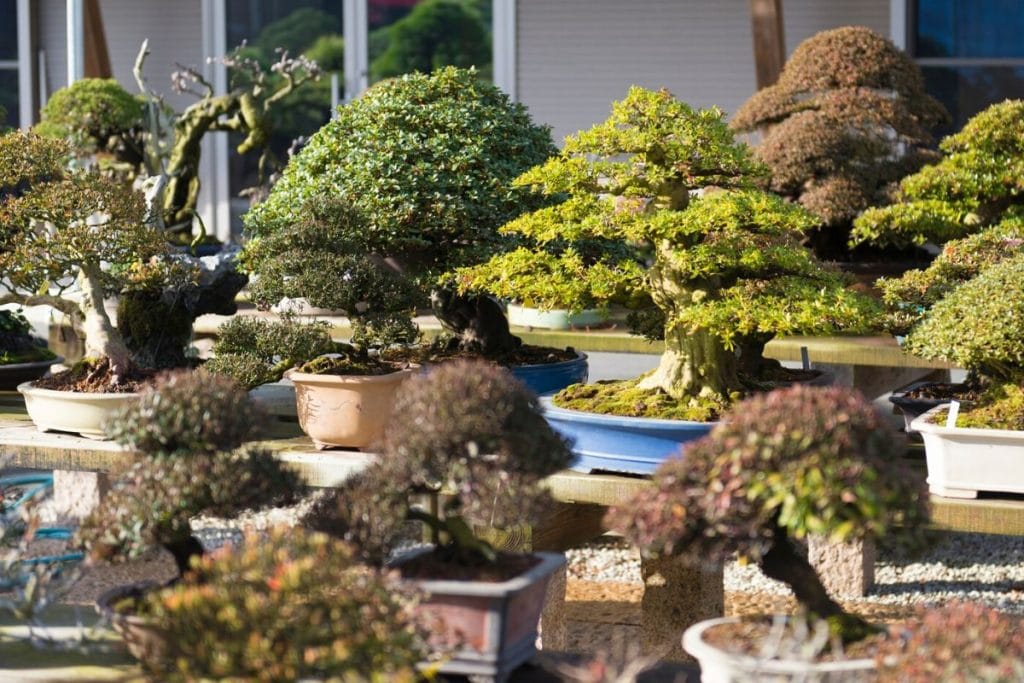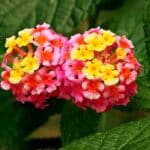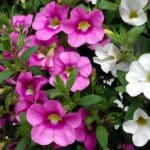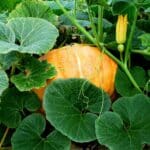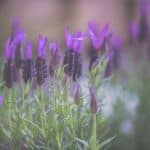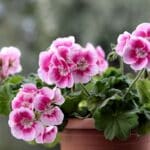Have you ever wondered about bonsai trees, but you never read anything about them? Maybe you thought they were impossible to maintain, and you couldn’t even look at them because you knew they weren’t for you?
- History of Bonsai Trees
- What to Consider Before Getting a Bonsai Tree?
- Types of Bonsai Trees and Plants You Can Grow
- Artificial Bonsai Tree
- Juniper Bonsai Trees
- Indoor Bonsai Trees
- Acacia Bonsai Tree
- Bonsai Money Tree
- Baobab Bonsai Tree
- Boxwood Bonsai Tree
- Brazilian Rain Tree Bonsai Tree
- Buddha's Ear Bonsai Tree
- Buddhist Pine Bonsai Tree
- Cactus Combo Bonsai Tree
- Cedar Bonsai Tree
- Desert Rose Bonsai Tree
- Ficus Bonsai Tree
- Jade Bonsai Tree
- Hawaiian Umbrella Bonsai Tree
- Hornbeam and European Beech Bonsai Tree
- Jacaranda Bonsai Tree
- Norfolk Island Pine Bonsai Tree
- Weeping Willow Bonsai Tree
- Outdoor Bonsai Trees
- Bamboo Bonsai Tree
- Birch Bonsai Tree
- Buttonwood Bonsai Tree
- Chinese Elm Bonsai Tree (Ulmus parvifolia)
- Ginkgo Bonsai Tree
- Hinoki Cypress Bonsai Tree
- Bald Cypress Bonsai
- Japanese Black Pine Bonsai Tree
- Japanese Maple Bonsai Tree
- Larch Bonsai Tree
- Liquidambar Bonsai Tree
- Oak Bonsai Tree
- Premna Bonsai Tree
- Redwood Bonsai Tree
- Spruce Bonsai Tree
- Trident Maple Bonsai Tree
- Bonsai Trees That Produce Flowers and Fruits
- Apple Bonsai Tree
- Azalea Bonsai Tree
- Bahama Berry Bonsai Tree
- Black Olive Bonsai Tree
- Bird Plum Bonsai Tree
- Bougainvillea Bonsai Tree
- Bromeliad Bonsai Tree
- Brush Cherry Bonsai Tree
- Cape Honeysuckle Bonsai Tree
- Celtis Bonsai Tree
- Citrus Bonsai Tree
- Cherry Blossom Bonsai Tree
- Chinese Pepper Bonsai Tree
- Crabapple Bonsai Tree
- Cotoneaster Bonsai Tree
- Crepe Myrtle Bonsai Tree
- Dogwood Bonsai Tree
- Dwarf Pomegranate Bonsai Tree
- Firethorn Bonsai Tree
- Fuchsia Bonsai Tree
- Fukien Tea Bonsai Tree
- Grapevine Bonsai Tree
- Hibiscus Bonsai Tree
- Magnolia Stellata Bonsai Tree
- Privet Bonsai Tree
- Rosemary Bonsai Tree
- Wisteria Bonsai Tree
- Yew Bonsai Tree
- A Few More of the Most Common Bonsai Tree Species
- How to Grow Bonsai Trees?
- Common Questions About Bonsai Trees
But guess what? These presumptions are entirely wrong. Did you know that most bonsai trees are relatively easy to care for? In fact, you don’t need a lot of previous knowledge or experience if you decide to get one!.
What’s more, bonsai trees are known for bringing health into your life by only having them placed nearby you (1).
Better yet, there are all kinds of beautiful bonsai trees you can grow. Bonsai is an ancient art of cultivation that involves growing trees in shallow containers throughout a long growing season.
Bonsai is not a single type of tree, as traditionally believed by many people. From birch bonsai to Japanese white pine and even cedar species frequently grown as bonsai, there are all kinds of species you can use for bonsai cultivation. And you can do it both indoors and outside!
The key here is to choose plants that can tolerate root confinement. So which forgiving tree is best?
This article will provide you with everything you need to know if you are seriously considering getting a bonsai tree. So, continue reading and discover the world of bonsai trees and all you need to know about bonsai cultivation!
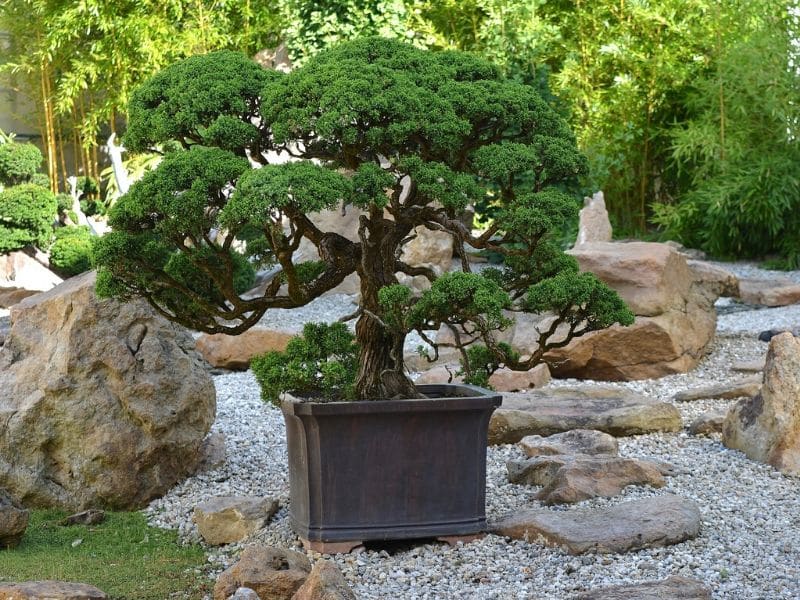
History of Bonsai Trees
Many people think bonsais are Japanese because the word ‘’Bon-sai’’ (some people might call it ‘bonzai’) comes from the Japanese language. However, if we are talking about the trees, then did you know that the art behind them is Chinese?
Yes, it was during the Chinese Empire that this art became known. It was approximately during the year 700 AD, that the Chinese started to use unusual and unique techniques that would allow them to grow variants of regular trees and make them dwarf trees by placing them in containers (2).
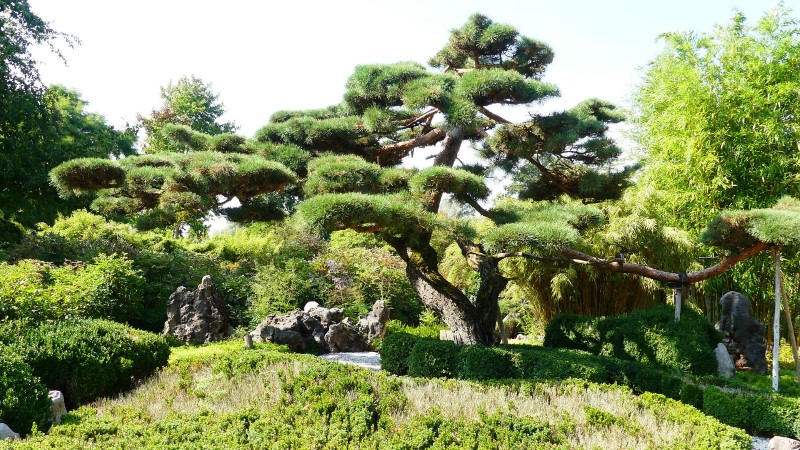
This art was referred to as ‘’pun-Tsai’’ back then, and only the elite or those who had wealth were able to practice these techniques. Once they became experts on it, they would travel throughout their country and would give bonsai trees as a luxurious gift.
Then, when the Kamakura period arrived in Japan (which was the time when they adopted most of China’s ways of being), the bonsai trees also made their way to this country. They soon realized that the art of making bonsai trees was compatible with the influence that Zen Buddhism also had in the region.
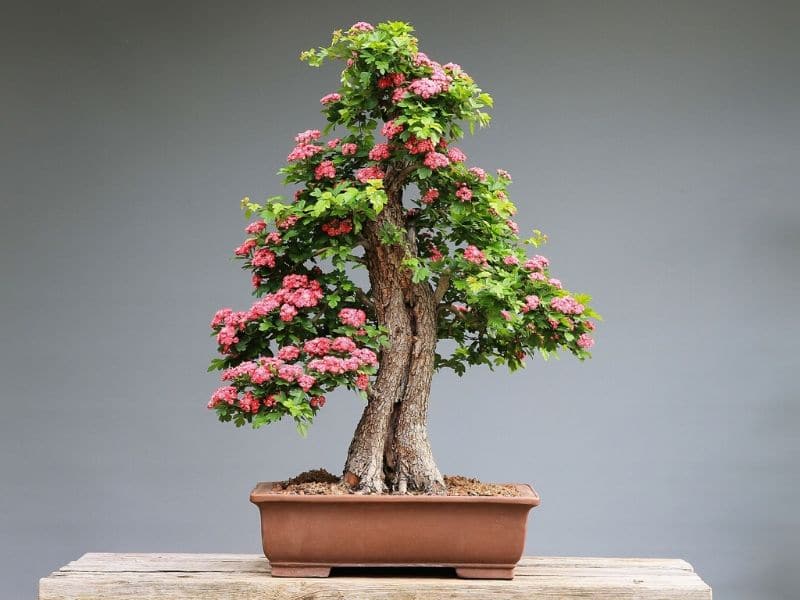
So, how did the West discover bonsais? Many years later, more specifically, in 1604, the Spaniards were already colonizing the islands of the Philippines.
Thus, it was there where they saw for the first time how the Chinese nationals in those islands were growing small ficus trees into pieces of coral, which was their unique way of recreating the art that they had learned in their home country.
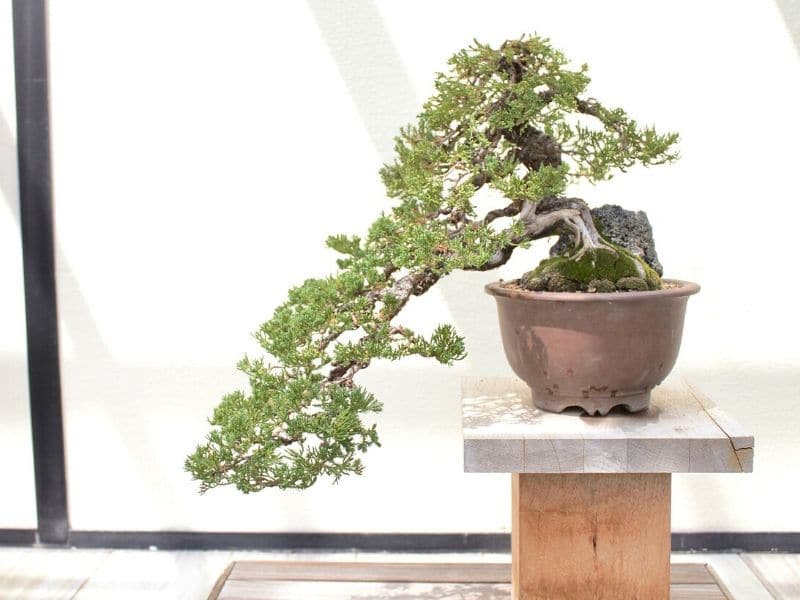
What to Consider Before Getting a Bonsai Tree?
One of the first things you must take into account before getting a bonsai tree is whether or not you are a complete beginner.
If you are, then you should get a bonsai that is easier to maintain; this way, you will start seeing how they behave, how they grow, and how you get on with them.
You will also need to consider the type of climate you live in. Is your area very hot or very cold? This will determine the kind of bonsai you should get.
Lastly, you must look at all of the options and be true to your budget. Some bonsai trees are costly and require a lot of maintenance.
Therefore it is advisable to purchase a relatively affordable bonsai with little or no maintenance if you are a complete beginner, this way, you will fully take advantage of growing it on your own.
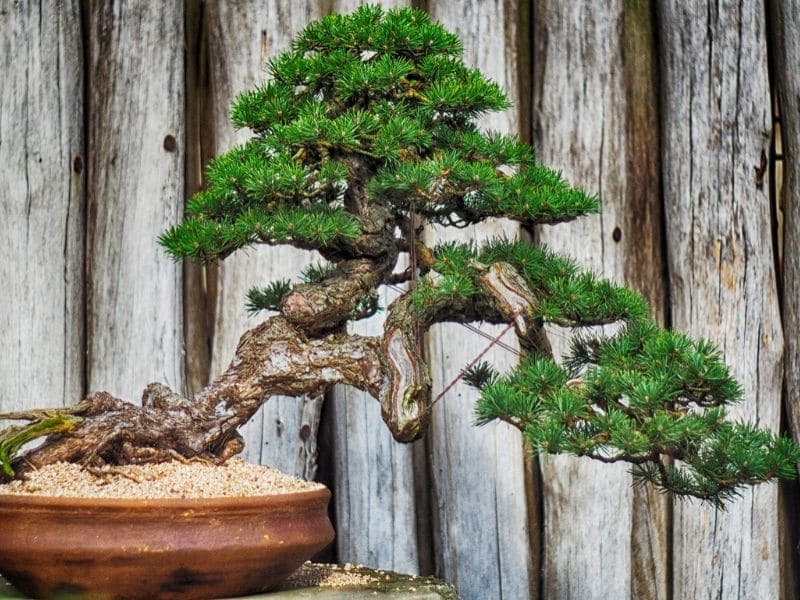
Types of Bonsai Trees and Plants You Can Grow
There are many types of bonsai trees. The following are the most common ones:
Artificial Bonsai Tree
They are also referred to as artificial indoors bonsai trees or fake bonsai trees. If you don’t have time to do maintenance or if you travel a lot, then you should consider getting one of these because, as the name suggests, they are artificial replicas of the real trees, so they will never die!
These types of trees come without the challenge of constant maintenance, so no need to shape them, grow them, or water them.
So if you live a busy life, or you don’t have the energy to take care of a real bonsai tree, then why don’t you get an artificial bonsai? Many online tutorials will teach you how to make your own.
Juniper Bonsai Trees
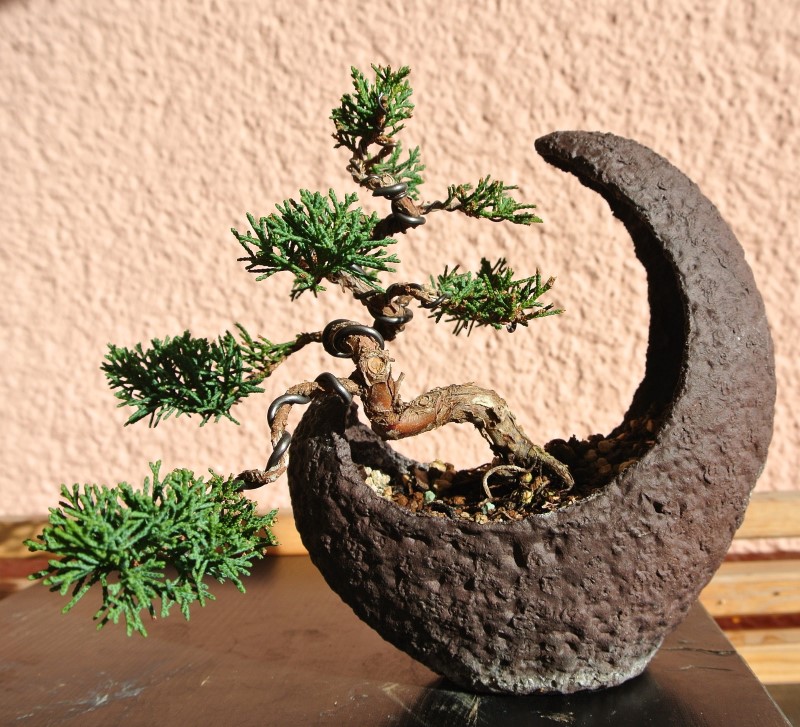
Juniper bonsai trees are the simplest type of bonsai, but it is also the easiest to maintain. Therefore these characteristics make them very popular among beginners.
Nothing will happen to juniper bonsai trees if you forget to water them for a day or two. Their branches are very flexible. Thus it’s also easy to shape them in however form you would like.
Green Mound Juniper Bonsai Tree
If you are about to purchase a Juniper Bonsai tree, then you are likely getting a Green Mound Juniper, because they are trendy. They will thrive in many types of climates, and they are reasonably easy to maintain.
Therefore, they are the right type of bonsai for beginners. Also, their foliage is easy to trim. They will thrive outdoors, but they need to be protected against the sun.
Needle Juniper Bonsai Tree
Also known as Juniperus Squamata or Himalayan Juniper. They are lovely and can bring a lot of peace to any household.
They are easy to shape and to care for. Thus these characteristics make the Needle Juniper Bonsai very popular. It tends to grow short needle clusters that form an umbrella like canopy and can tolerate indirect light (or as much light as you choose to give them with some heavy crown pruning).
Indoor Bonsai Trees
These types of bonsai trees are perfect for those who don’t have much space outdoors or who live in an apartment, for example.
They are also ideal if you are looking for a low maintenance indoor plant that will bring a sense of calm and a piece of nature to your home or office.
Acacia Bonsai Tree
This low maintenance bonsai tree needs plenty of sunlight to thrive. However, they cannot be placed directly under the sun. Therefore, it is advisable to put them indoors next to a window so they can catch the sun rays.
You will need to water them every day, but always make sure you don’t overwater them each time, as they could drown.
Bonsai Money Tree
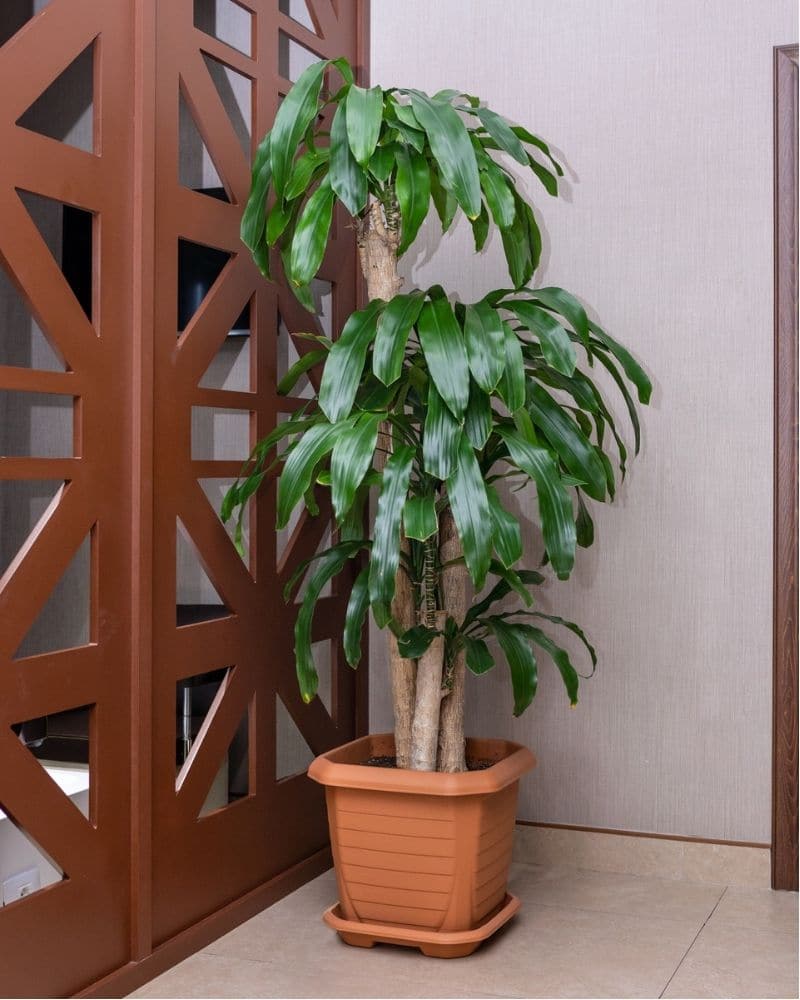
Legend has it that when a poor man prayed for his luck to improve, he received this bonsai, and he decided to take it home with him.
Once the bonsai started growing and he learned the art of maintenance, he started reproducing them and selling the bonsais off to whoever would ask him to buy it. Therefore, he started earning some money.
The bonsai money tree is also known as Pachira Aquatica, and it is the preferred choice when working with feng shui, as it brings a lot of good luck to any house.
Baobab Bonsai Tree
The Baobab tree is one of the most famous trees in the world, and it tends to grow in the African continent.
Even though it is interesting to see a baobab bonsai tree, it is also very unusual to see one. They may grow very slowly, though, so if you are in a hurry to see yours grow, you should probably get a different type of bonsai.
Boxwood Bonsai Tree
Also known as Buxus, this bonsai is very robust and can grow quickly. They should be protected from cold climates, especially during winter, so they will thrive best when placed indoors.
On the other hand, dwarf boxwoods will need to be continuously watered during summertime, as they cannot stand being without water either. So while you will need to keep the soil moist, avoid too-frequent watering, as this can be detrimental too.
That said, there are several types of dwarf boxwoods as bonsai tree types to consider. Popular options include the Kingsville dwarf bonsai style and the littleleaf boxwood. These are some of the most popular trees for beginner bonsai cultivation.
Brazilian Rain Tree Bonsai Tree
This is an easy type of bonsai that thrives when it’s indoors. It has delicate and pointy branches and bright green leaves that tend to fold up during the night, and then they will unfold during the day.
Even though they can stand warm climates, they should be placed indoors whenever the temperature drops, as they will adapt and grow better inside.
Buddha’s Ear Bonsai Tree
Also known as Alocasia cucullata. Even though they like the sun, they can thrive when placed indoors. They have a couple of leaves and prefer moist soil.
Buddhist Pine Bonsai Tree
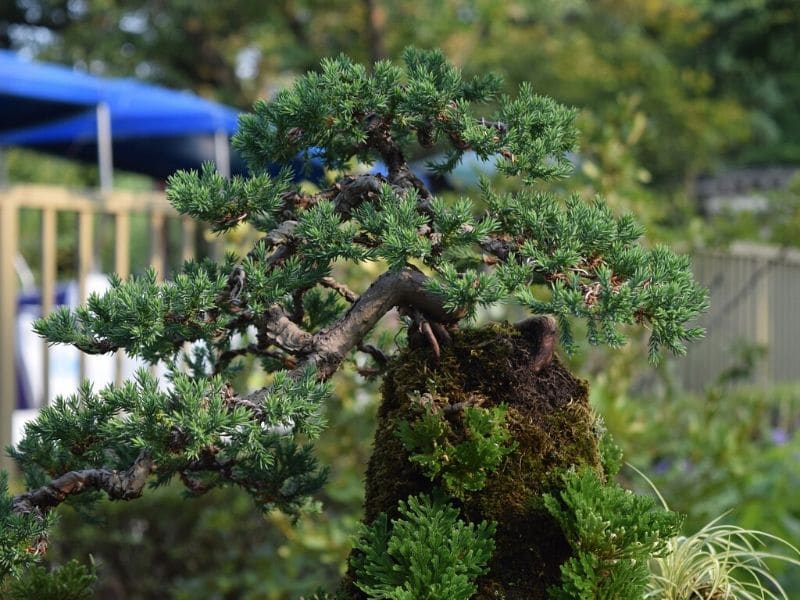
Also known as podocarpus macrophyllus. This bonsai will thrive best when placed indoors. They need to be watered whenever the soil feels dry.
Cactus Combo Bonsai Tree
If you don’t have time to water your plants, then you need to get this type of bonsai. Cactus combo bonsai trees are perfect for those individuals who are always ‘’on the go’’, as they don’t need a lot of maintenance.
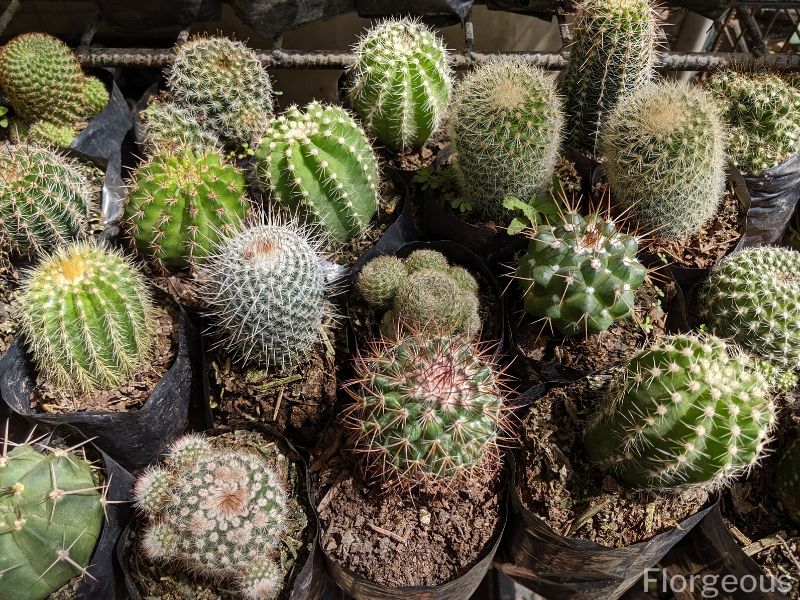
Because they are cactuses, they don’t require a lot of water. In fact, you will only need to water them once a month or so as they could die if you water them each week.
Cedar Bonsai Tree
Also known as Cedrus, this type of bonsai tends to grow tall. Cedar bonsai trees should be continuously watered, and if the climate you are in is very cold, you should place your cedar trees indoors; if not, then they should be placed outdoors.
There are four cedar species that are typically grown as bonsai plants for interior design: Cedrus deodora (Himalayan cedar), Cedrus libania, Cedrus breviolia (Cyprus cedar), and Cedrus atlantica.
Cyprus cedar, along with Cedrus atlantica and Cedrus libania, are all types of bonsai trees that are relatively easy to find and do quite well in full sun.
Their green foliage lasts almost all year long with evergreen leaves year round, making them a great choice for beginners who don’t want to have to wait a long time to see new growth. These are well proportioned trees with deep green leaves and scale like foliage.
Though there are certainly more than these four cedar species to choose from in general, these are the most popular types of bonsai tree species to consider.
Desert Rose Bonsai Tree
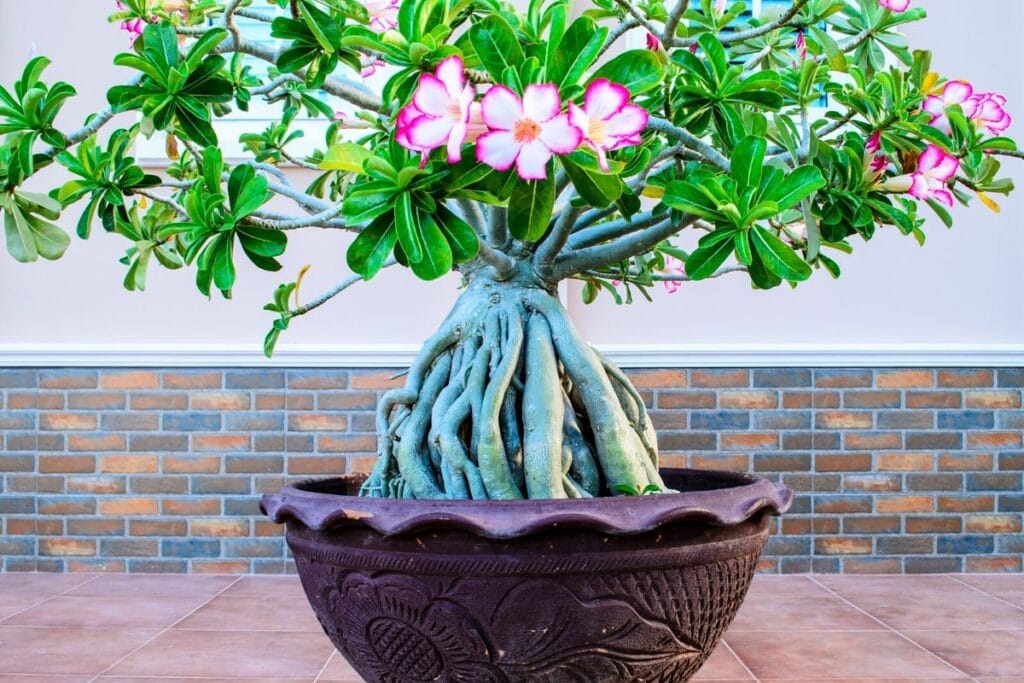
Scientifically known as Adenium obesum, this type of plant is not a bonsai per se, although because it can grow in small pots, it is often seen as a bonsai as well. Bonsai enthusiasts will love the year round beauty these different types of low maintenance bonsai trees provide!
They should be placed outside during warmer months, and when winter arrives, they should be placed indoors.
Ficus Bonsai Tree
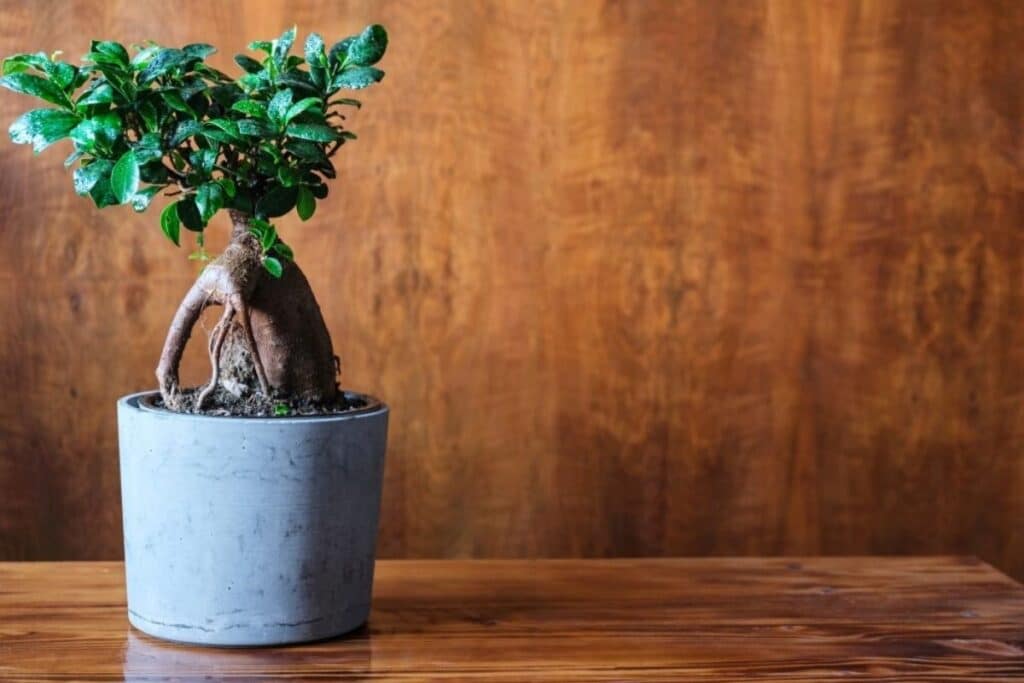
Also known as Retusa or Ginseng, the ficus bonsai has an s-curved trunk, and it’s prevalent amongst beginners (3).
Ficus bonsai trees need lots of light; however, if the temperature is not warm enough, then they should be placed inside. There are several types of ficus plants you can grow as bonsai plants, including ginseng ficus, weeping fig, ficus benjamina, and ficus retusa.
Jade Bonsai Tree
Known as Portulacaria afra, this bonsai is originally from the African continent. They may produce flowers sometimes, but it is not very common to do so.
Another similar variety to the jade bonsai tree is crassula ovata. They will thrive best when placed indoors. However, they will also need to be exposed to the full sun.
Hawaiian Umbrella Bonsai Tree
Its botanical name is Schefflera arboricola ‘Luseane’. They tend to thrive whenever they are placed indoors. Schefflera arboricola doesn’t require much maintenance and are an easy bonsai to have, especially for beginners.
Hornbeam and European Beech Bonsai Tree
Even though they are two different types of trees, they are often mentioned together. Both of them should be protected from hard climate conditions. Beech trees (Fagus sylvatica) in particular have a pretty simple root system that makes them well suited for growing indoors.
Just note that a European beech tree cannot thrive when they are placed directly under sunlight, so it’s best to have them indoors with lots of sun so that the ideal place would be right next to a window.
Jacaranda Bonsai Tree
Known as Jacaranda mimosifolia, this tree is native to Central and South America. They need to be placed in an open space where pure air flows continuously.
However, they can be placed inside right next to a window. You will need to trim them regularly, this way, they will grow healthier.
Norfolk Island Pine Bonsai Tree
Its scientific name is Araucaria heterophylla. It can be grown indoors. However, you will need to move it around always, this way it can receive sunlight from different angles.
You will need to prune them every now and then. However, you must be very careful when doing so as it can be complicated to achieve a right style.
Weeping Willow Bonsai Tree
This tree is native to China, although it is now growing in different areas of the world as well. They are unique bonsai trees because of their appearance, and, as a result, their styling is not easy.
If you are going to care for this type of bonsai, you must have previous experience with caring for difficult bonsai trees.
Outdoor Bonsai Trees
These types of bonsai trees are perfect for those who have space outdoors. They are also ideal if you are looking for a bonsai that will bring peace and calm to your garden.
Bamboo Bonsai Tree
Bamboo bonsai are very difficult to find (needless to say to maintain) because what most people think are bamboos are often a completely different type of plant.
The reason behind this is that the natural way in which bamboos grow makes it almost impossible for them to become a bonsai.
There are, however, a couple of ways in which this can be achieved, but it is challenging, especially for a beginner.
Birch Bonsai Tree
They love sunny and warm climates! Birch bonsai are types of bonsai trees that will thrive best whenever they are fully exposed to the sun. They are also very unique because they grow very well whenever they are turned into a bonsai. They also require lots of water.
Buttonwood Bonsai Tree
This type of bonsai will thrive best when placed directly under the sun. They also need you to water them regularly.
Chinese Elm Bonsai Tree (Ulmus parvifolia)
Also known as Ulmus Parviflora, this type of bonsai will thrive best when placed outdoors. Also, you will need to water your Chinese elm bonsai regularly year round as they tend to absorb lots of water.
Ginkgo Bonsai Tree
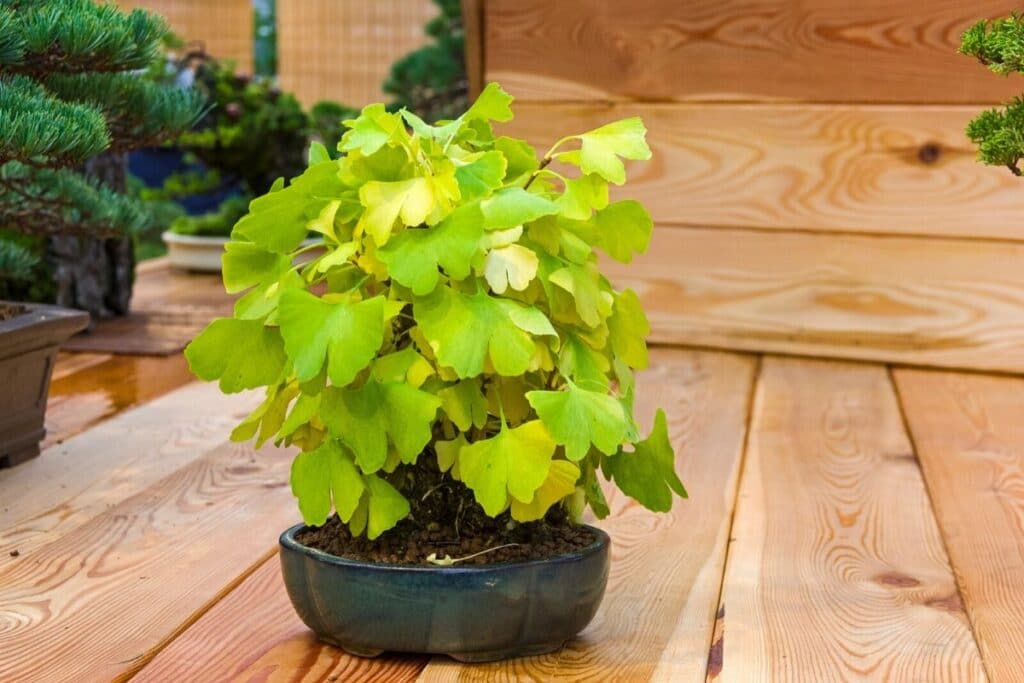
Mostly known as Ginkgo biloba, this bonsai needs to be placed outside in order to grow correctly. Its leaves will change color according to the seasons, and they need to have moist soil.
Hinoki Cypress Bonsai Tree
Hinoki Cypress is not real cypress. They need to be pruned frequently, and they are relatively easy to propagate. They need to be exposed to direct sunlight whenever it’s possible, and you should water them regularly without overwatering them.
Bald Cypress Bonsai
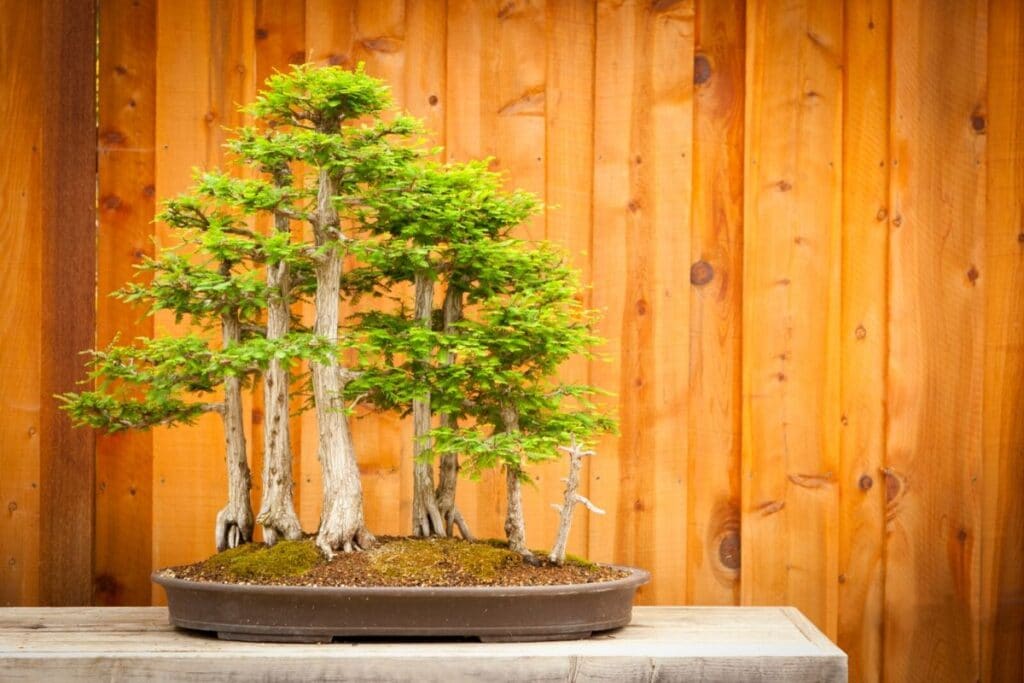
The Bald Cypress (as known as Taxodium distichum) is native to the southern portions of the United States as well as areas in Guatemala and Mexico. They need to be watered daily preferably because they grow in full sun and outdoors.
Japanese Black Pine Bonsai Tree
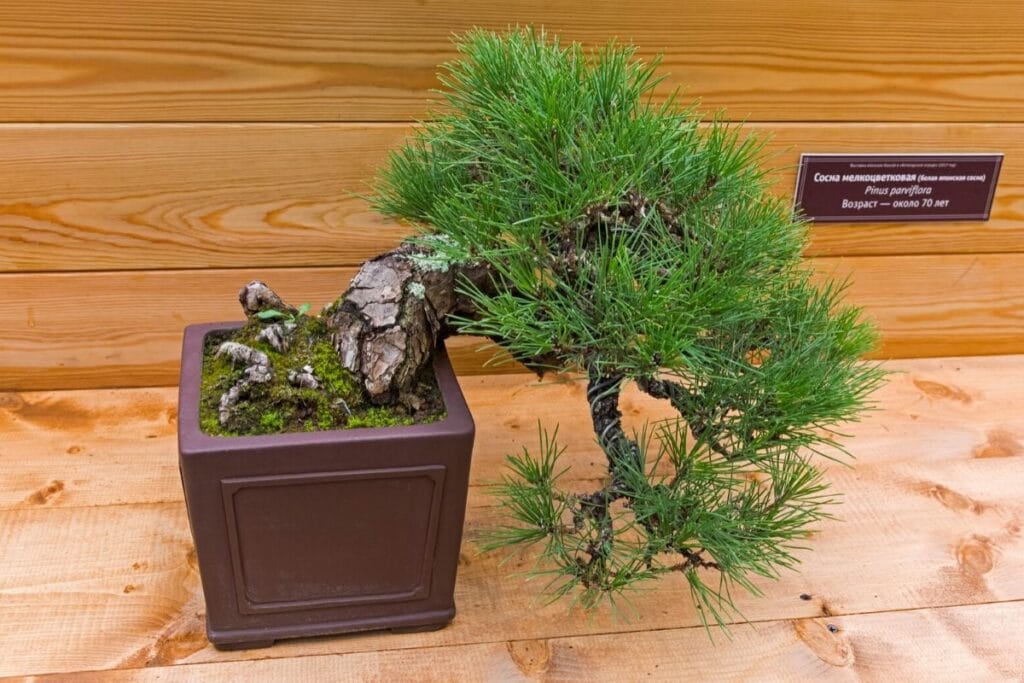
They are known as Pinus thunbergii. This bonsai is also known for surviving harsh climates. Therefore, they can survive without water for a couple of weeks.
Some other types of pinus will need to be exposed directly to the sun, though.
Japanese Maple Bonsai Tree
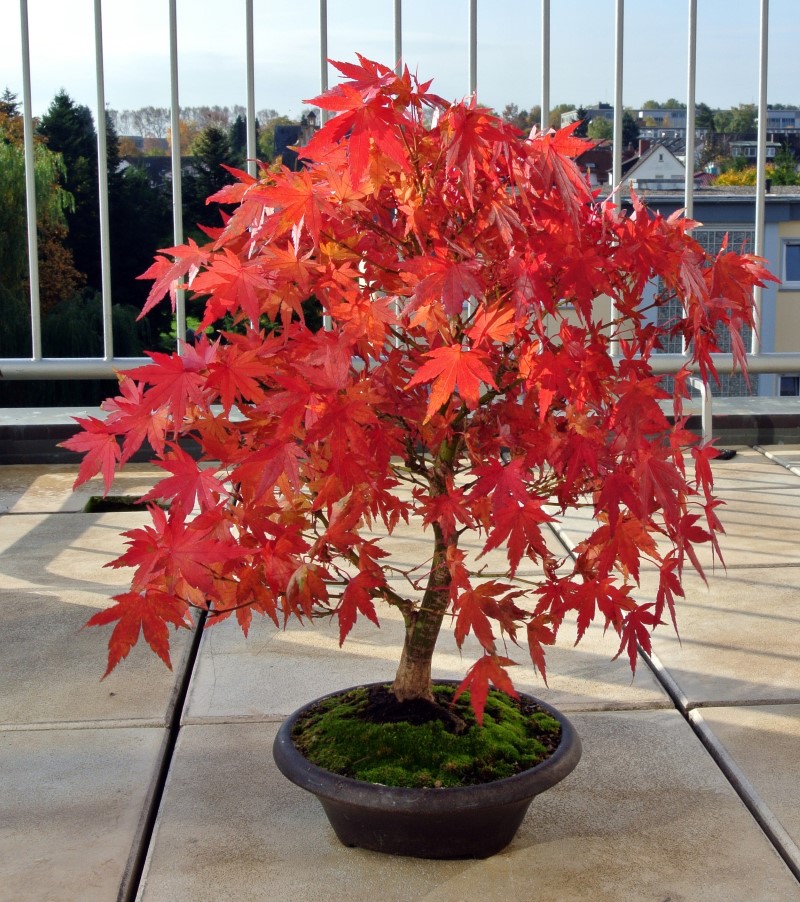
Also known as Acer Palmatum, this bonsai is a sturdy species, however, you must not overwater them as this could affect its growth. Japanese maple bonsai (Acer palmatum) are some of the most common uses for Japanese maple trees.
Larch Bonsai Tree
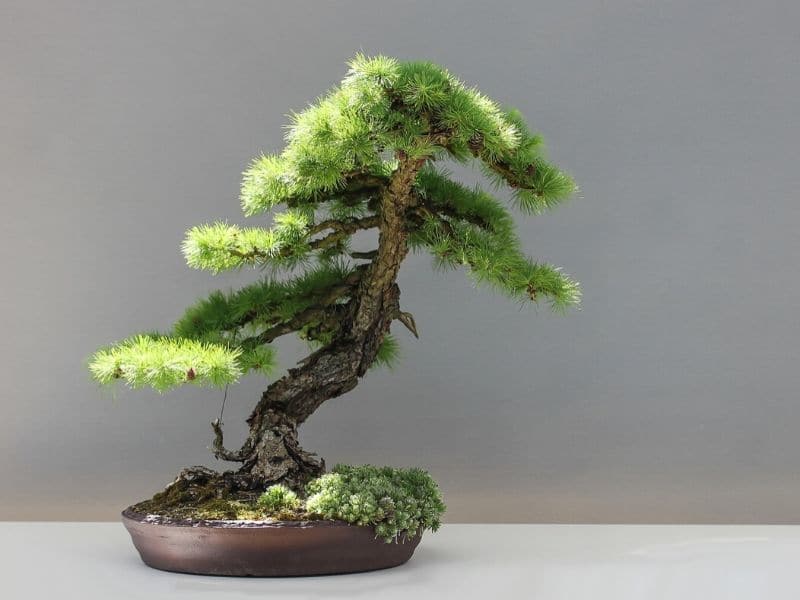
Its scientific name is Larix. They can thrive when they are placed outdoors throughout the year. They need to be watered constantly.
Liquidambar Bonsai Tree
It doesn’t require much maintenance. It will show you lots of different colors throughout the seasons, as its leaves tend to change color always.
Oak Bonsai Tree
Also known as Quercus. They are very resistant to different types of climates. However, they prefer to be fully exposed to direct sunlight. They tend to need less water during winter.
Premna Bonsai Tree
It’s native to Asia, and it’s a subtropical tree. Therefore, they need lots of sun. You could place them indoors. However, they need to be exposed to the sun, so put them next to a window.
Redwood Bonsai Tree
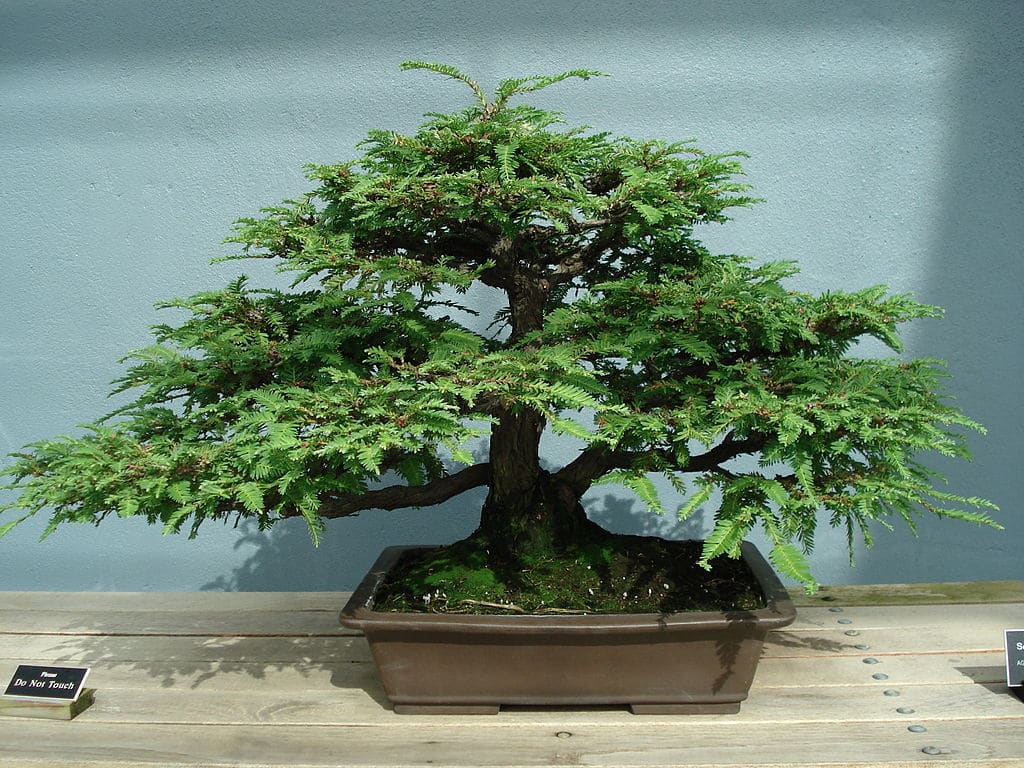
Also known as Metasequoia and Sequoia, they are one of the tallest trees in the world.
Redwood bonsai thrives best when placed directly under the sun; however, during the summer, they should be placed underneath a shade. They also require a lot of water to survive, especially if it’s a hot day.
Spruce Bonsai Tree
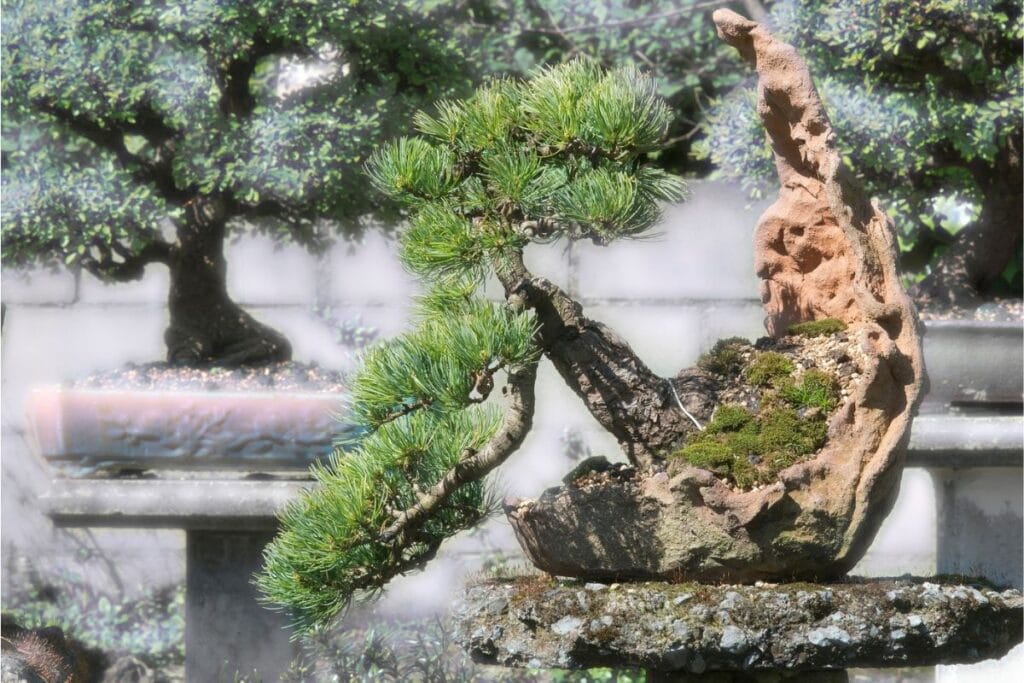
They are sometimes known as Picea. They can be propagated easily. They should be placed directly under the sun, and during winter, they must be protected from the cold.
Trident Maple Bonsai Tree
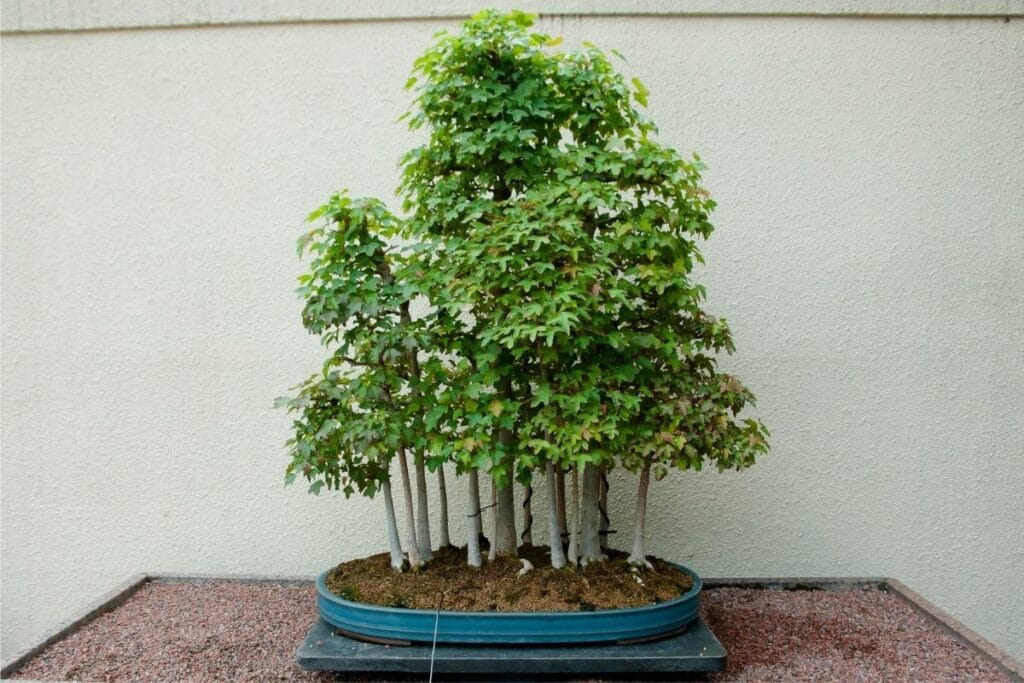
Scientifically known as Acer Buergerianum, this bonsai is not as popular as other types of bonsai because they need constant maintenance. They shouldn’t be placed indoors. However, they do need to be protected from direct sunlight.
Bonsai Trees That Produce Flowers and Fruits
There are many flowering trees and fruit trees that can be shaped into bonsai. Here are some examples:
Apple Bonsai Tree
Also known as Clusia rosea. They need to be watered daily, and you must put a fertilizer to help them thrive when they are not producing fruit yet.
You could grow bonsai apple tree indoors, but they prefer to be exposed under direct sunlight.
Azalea Bonsai Tree
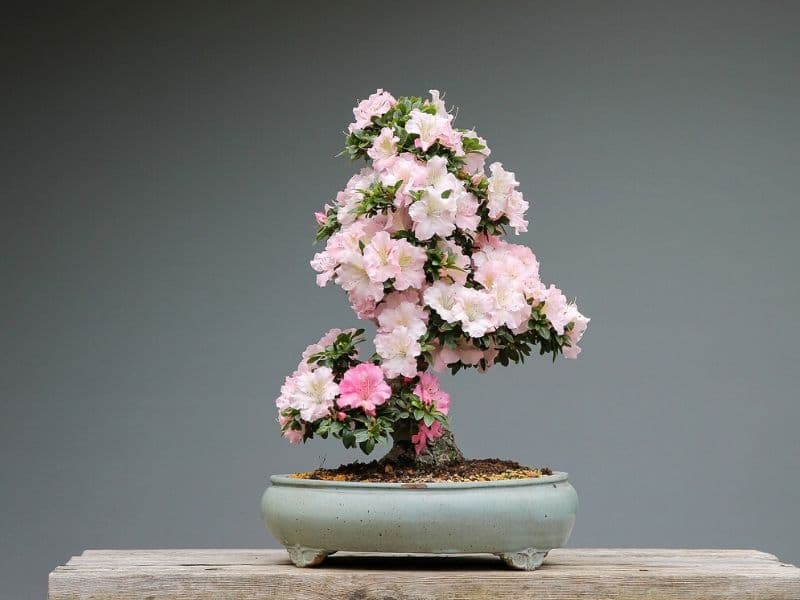
It’s scientific name is Rhododendron. You should carefully watch over your Azalea bonsai tree, especially when displaying its beautiful flowers, as they can attract several types of insects and pollinators.
Azalea bonsai trees will thrive outdoors; however, they must be protected against intense temperatures and direct sunlight.
Bahama Berry Bonsai Tree
Also known as Nashia inaguensis, they are very interesting-looking because they have a long bark that tends to look old, even if the bonsai is relatively young. They are a tropical plant, so they need to be fully exposed to the sun.
Black Olive Bonsai Tree
Even though they produce a type of fruit (which is not edible), they are not the same as the ordinary olives. They have lots of branches which are filled with spines. They are delicate bonsai trees. However, they tolerate heat very well.
Bird Plum Bonsai Tree
Also known by its scientific name Sageretia Theezans. This Plum bonsai likes to be under the shade, even when they are outside. They can die easily if they don’t receive enough water, but you must also try not to over-water them.
Bougainvillea Bonsai Tree
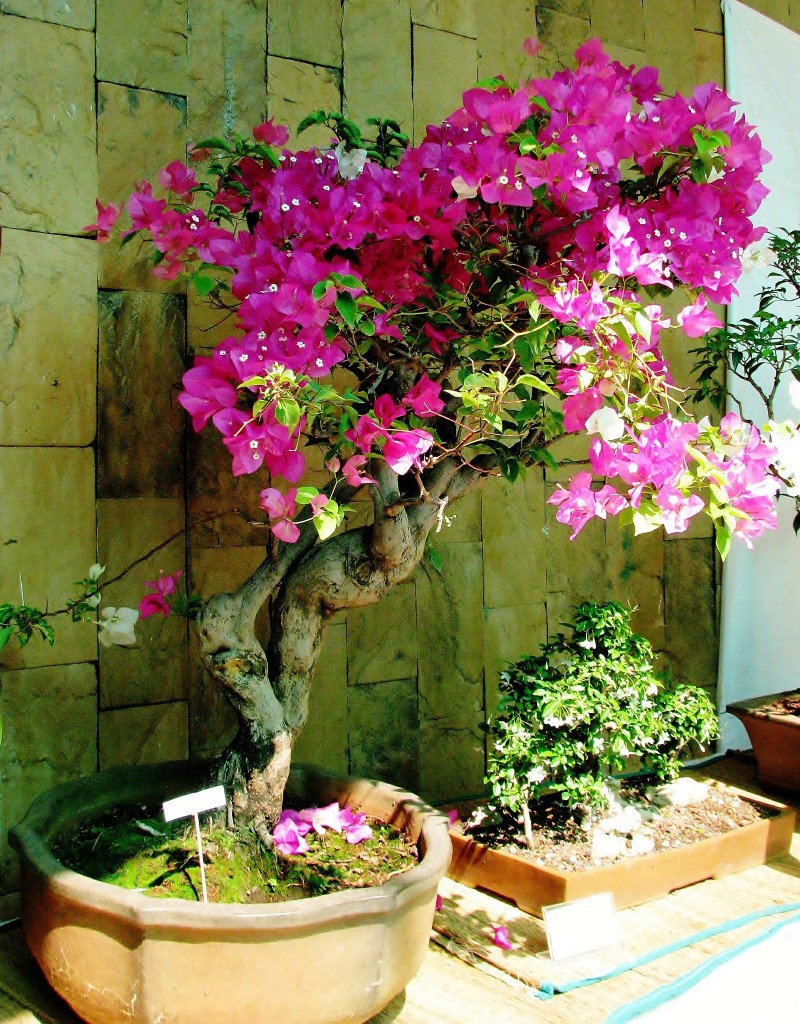
Not difficult to grow, but you do need to make sure they are fully exposed to the sun. These Bougainvillea bonsai trees produce bright color flowers, which are often yellow, pink, and orange.
Bromeliad Bonsai Tree
Their scientific name is Bromeliaceae, and they are one of the most beautiful and impressive bonsai trees in nature. They will thrive best when placed outdoors as they need plenty of sunlight to grow.
Their soil must be moist but not waterlogged, and they will need to have fresh air in order to survive.
Brush Cherry Bonsai Tree
A lovely bonsai that is known scientifically as Eugenia ‘myrtifolia’. You could either place them indoors or outdoors, make sure they are receiving enough water. These cherry trees will produce small white flowers with red fruit, some of them will be edible, but not all.
Cape Honeysuckle Bonsai Tree
A scarce plant, this bonsai is not suitable for beginners as they require special care. They are also known as Tecoma Capensis. They can also produce bright flowers that can catch everybody’s attention.
Celtis Bonsai Tree
Commonly referred to as Hackleberry, this bonsai needs to receive water consistently. They should also be placed in an outside shaded area.
Citrus Bonsai Tree
These could either be orange trees or lemon trees. They tend to produce these small fruits, which leave a sweet fragrance wherever they are placed. They need constant water, especially during the summer.
Cherry Blossom Bonsai Tree
Scientific name: Prunus x yedoensis. They are best known for their fruits and exotic flowers. Cherry Blossom bonsai trees need to be protected from intense sun rays, and during winter time, it is preferred to move them indoors.
Chinese Pepper Bonsai Tree
Also known as Zanthoxylum piperitum. The fruit that this tree gives is very spicy. They need to be continuously watered, especially as they grow.
Crabapple Bonsai Tree
Also known as Malaus. This is a small bonsai that produces delicious small fruit. They tend to need a lot of sun and a lot of water.
Cotoneaster Bonsai Tree
They are sometimes referred to as Cotoneaster ‘Lucidus’. They will thrive outdoors, especially if they can be exposed directly under the sunlight. They don’t need to be watered always, and they will produce small red fruit.
Crepe Myrtle Bonsai Tree
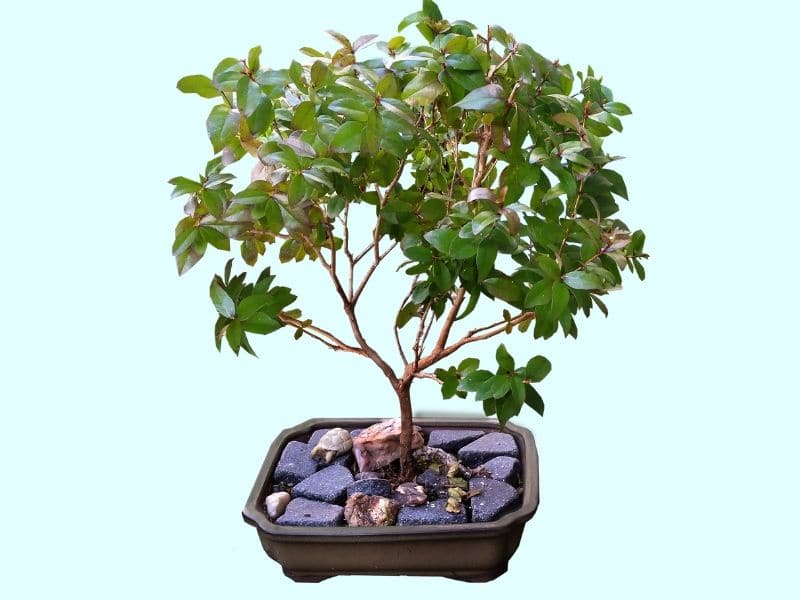
Also known as Lagerstroemia indica, this type of bonsai will thrive when placed directly under the sunlight. They will produce pink flowers that are very fragrant as well.
Dogwood Bonsai Tree
Sometimes referred to as Cornus florida, this type of bonsai is lovely and unique, mainly because they produce a large white flower right at the end of spring.
They should receive plenty of sunlight and must be placed in an open area where air circulates freely.
Dwarf Pomegranate Bonsai Tree
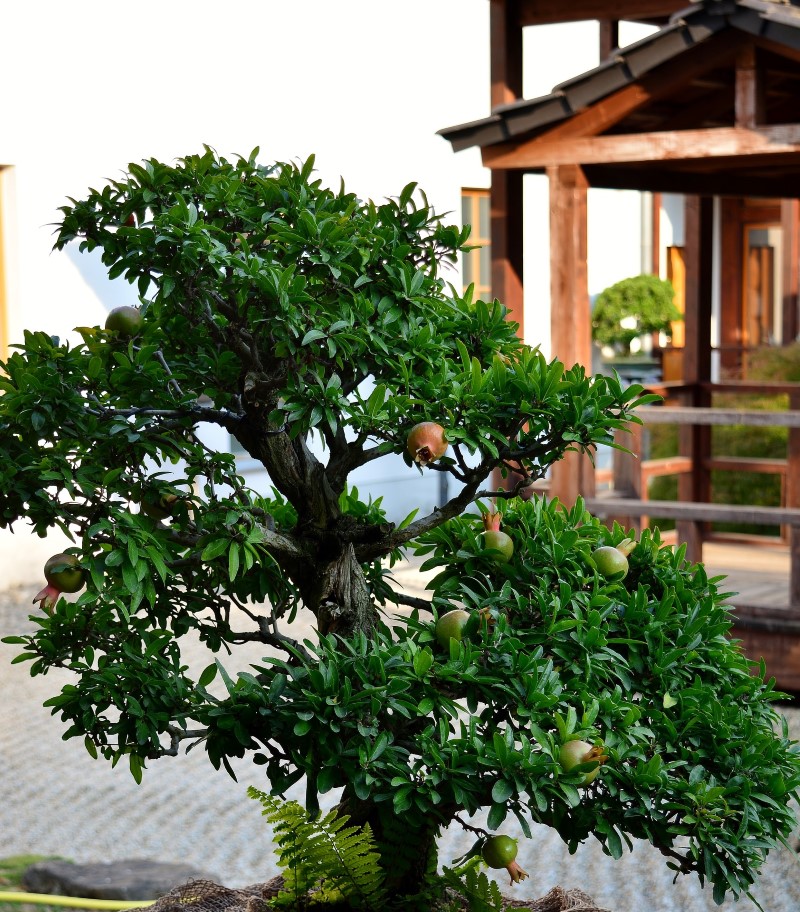
An alternative name of Dwarf Pomegranate is Punica granatum. They are small bonsai trees that require a lot of sun, air, and water in order to thrive. They will produce a big red flower that easily attracts insects.
Firethorn Bonsai Tree
Also known as Pyracantha, this bonsai produces small red fruits. It has very dark foliage, and they need lots of water, especially during the summer.
Fuchsia Bonsai Tree
Because they produce big bright flowers, they need to be placed outdoors in order to thrive. They will also need regular watering and to be pruned regularly.
Fukien Tea Bonsai Tree
Also known as either Carmona retusa or Ehretia microphylla, this type of bonsai is reasonably easy to grow, making it a great bonsai for beginners.
Fukien tea will grow small white flowers if the right conditions have been met.
Grapevine Bonsai Tree
They produce grapes that are edible. They also preferred to be outdoors, especially if the weather is warm.
Hibiscus Bonsai Tree
Scientifically known as Hibiscus Sinensis, have huge orange and red flowers. They need to be exposed to the sun and need to be continuously watered.
Magnolia Stellata Bonsai Tree
Magnolia Stellata bonsai tree needs to be fully exposed to the sun. They also require lots of water. However, the soil mustn’t be overwatered. This bonsai will produce big and beautiful magnolia flowers.
Privet Bonsai Tree
They are also called Ligustrum. This bonsai needs direct sunlight throughout the day. And if it’s scorching outside, they will need to be continuously watered as well.
They are easily propagated and can tolerate pruning very well. They produce white and pink flowers.
Rosemary Bonsai Tree
Also known as Rosmarinus officinalis, this bonsai is relatively difficult to maintain as they need the correct amount of sun exposure, water, and air. It is also very fragrant.
Wisteria Bonsai Tree
Wisteria needs to be exposed to direct sunlight. They will also produce a unique-looking type of purple flowers that are hard to miss.
Yew Bonsai Tree
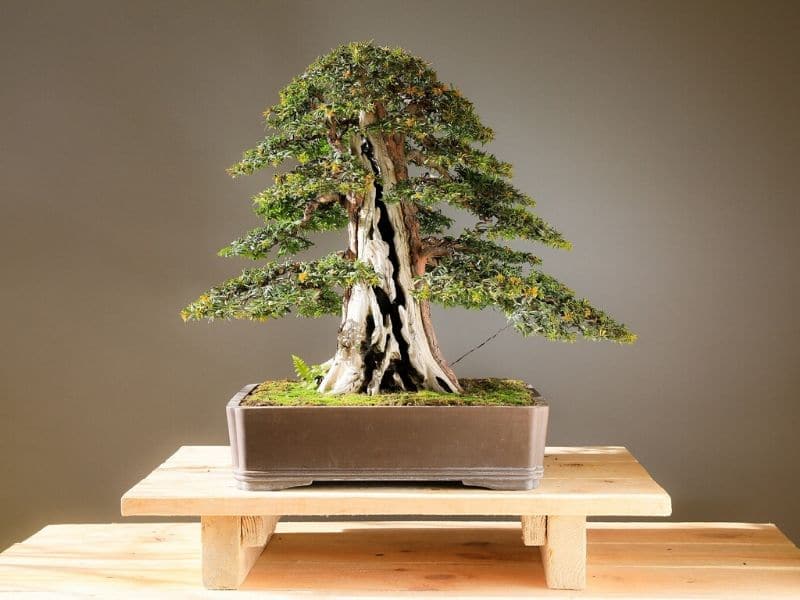
Also known as Taxus, this bonsai has very toxic parts; however, they are still very beautiful! Yew plants need to be exposed to direct sunlight, but when the weather gets too hot, then they should be placed indoors or in a shaded area.
A Few More of the Most Common Bonsai Tree Species
If you’re an avid bonsai enthusiast looking to expand your collection, consider adding a few more of the most common bonsai tree species to your garden. Here are some excellent options:
Lacebark Elm Bonsai
This visually striking tree is known for its stunning bark, which exfoliates in beautiful patterns to reveal contrasting and various shades of orange, brown, and gray green. It’s a hardy tree that can tolerate a wide range of growing conditions and is perfectly suited for beginners.
Japanese White Pines
The Japanese white pine tree is known for its delicate needles and shapely form. These are some of the most beautiful bonsai trees to consider if you want to train them into different shapes for interior design.
They are prized as bonsai specimens for their ability to create the illusion of depth and perspective with their foliage and branches. They can allow for some very dramatic bonsai styles!
However, they are a bit more challenging to grow than some other species, requiring frequent pruning, fertilization, and careful watering.
Dwarf Jade Plant
If you’re looking for a bonsai tree that’s easy to care for and can thrive in low light conditions, the Dwarf Jade Plant is an excellent choice. A jade bonsai tree has thick, succulent leaves that retain moisture well and can go up to two weeks between watering.
Mountain Pine
This species is ideal for those who live in colder regions with harsh winters. It can adapt to a wide range of soils and can tolerate periods of drought, making it ideal for outdoor bonsai enthusiasts. The needles are dense and compact, creating a unique texture for your collection.
Himalayan Cedar
This tree is known for its slightly drooping branches and blue-green needles. It’s ideal for creating the illusion of a miniature forest in your bonsai garden, making it an excellent choice for those who enjoy creativity and experimentation.
Satsuki Azalea
Azaleas are well-known for their riotous blooms in the spring, making them highly sought-after bonsai specimens. The Satsuki Azalea is particularly noteworthy for its stunning flowers in shades of pink, red, and white.
Snow Rose Bonsai
This bonsai tree is a must-have for lovers of bright, vibrant colors. The Snow Rose produces rich pink flowers and glossy evergreen foliage, making it a showstopper in any collection.
Japanese Flowering Cherry
The Japanese Flowering Cherry is a classic bonsai specimen that is known for its delicate pink and white blossoms in the spring. The Japanese flowering cherry an excellent choice for those who appreciate the beauty of nature in their gardens.
Littleleaf Boxwood
This bonsai tree is prized for its small, delicate leaves, which lend themselves well to intricate shaping and styling. It’s a slow-growing tree that requires regular pruning and watering, but the results are worth the effort.
How to Grow Bonsai Trees?
Whether you choose to grow a bonsai fruit tree or a flowering bonsai tree, you could either start growing bonsai trees from seeds, or you could also buy a ‘’pre-bonsai’’ that will allow you to take care of an existing (but small) bonsai tree.
Bonsai trees live indoors or outdoors, but most people will grow bonsai indoors for ease of access. There are several popular trees to choose from, but the goal here is to cultivate a plant with a sturdy trunk and to water daily in the early days. That way, your plant will produce gorgeous leaves year round as well as strong roots.
Either way, you choose, you must pay attention to them as they require lots of maintenance during the first couple of weeks, so they can germinate and eventually grow correctly.
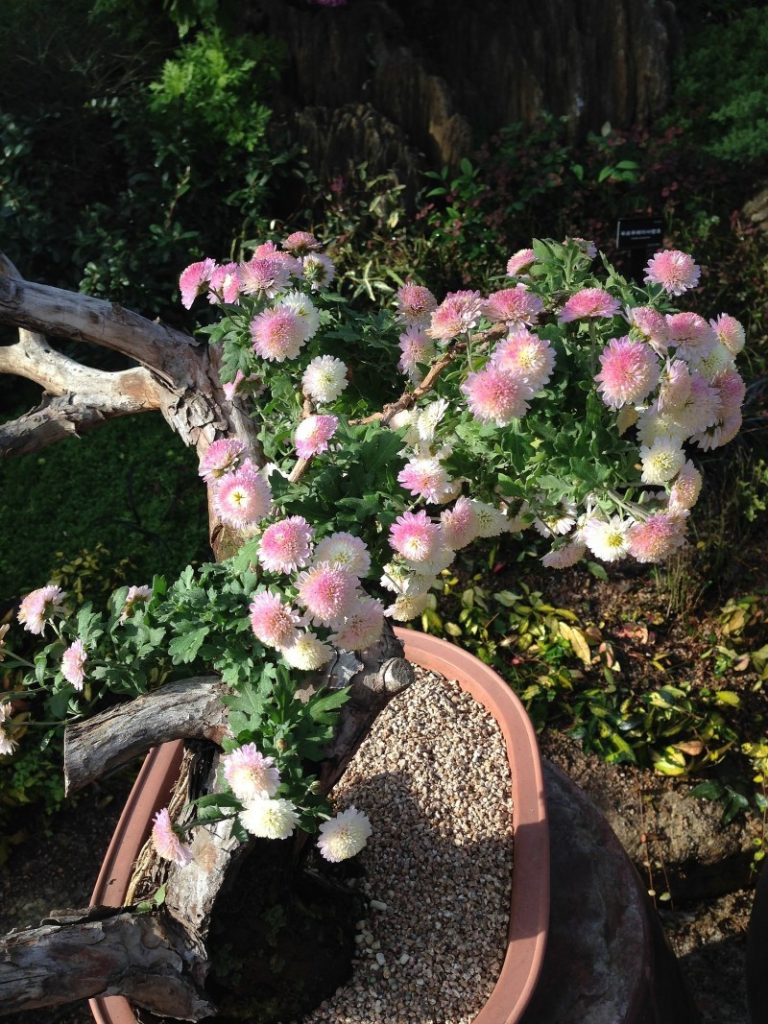
General Care and Maintenance
It will all depend on the type of bonsai you get; however, most of them need to be watered at least once a day. Other models will require you to trim and prune them at least once a year. Lastly, you should place them in a different pot every once in a while. Read our guide how to care for a bonsai tree to learn more.
Common Questions About Bonsai Trees
What do bonsai trees symbolize?
Bonsai trees represent peace, tranquility, and hard-work. They are often associated with well-being and play an essential role in the symbolism of life because whoever dedicates to the art of transforming a bonsai tree is thought of as an individual who seeks and obtains balance in their lives.
How to trim a bonsai tree properly?
Again, this will all depend on the type of bonsai tree you purchase. Some bonsai trees will need a trim every six months, others will need it yearly, and a few will need a trim every two years or so.
Why are bonsai trees so small?
Bonsai trees are small because they are a form of representation of bigger trees. Since this art form started, many thousands of years ago, bonsai trees were meant to be placed in containers in order to show the accurate scale of nature, inside a house.
They are meant to mimic the shape of the full-size trees; therefore, they cannot be grown as a full grown bonsai tree (4).
How long does it take for a bonsai tree to grow?
Another subjective question that can only be answered when knowing what type of tree you got. However, bonsai trees will usually start growing correctly after six months. Most of them will reach full maturity once they reach the six-year mark.
Conclusion
As you can see, the world of bonsai trees is unique, interesting, and above all, everything can happen! From producing edible fruits to having beautiful flowers, bonsai trees are made with lots of hard work.
Bonsai trees are suitable for any home, and they are also great for an individual who is not used to caring for a garden or trees.
Don’t hesitate to get one for yourself, your child, or even a neighbor! They are excellent gifts for all, which will bring lots of peaceful moments whenever you decide to use your bonsai and express your art (5).
Up Next:
References
Reference list
- Ochiai, H., Song, C., Ikei, H., Imai, M., & Miyazaki, Y. (2017). Effects of Visual Stimulation with Bonsai Trees on Adult Male Patients with Spinal Cord Injury. International journal of environmental research and public health, 14(9), 1017. https://doi.org/10.3390/ijerph14091017
- Ramteke, Vikas & Shukla, Abhilash & Kashyap, Sushil & Kurrey, Vivek. (2016). BONSAI PLANTS: BRING THE FOREST HOME. Innovative Farming. 1. 155-158.
- Arakelyan, Hayk. (2019). Health Benefits of Bonsai Ginseng Ficus.
- Darragh, John & Cleary, John & Witten, Ian. (1993). Bonsai: A Compact Representation of Trees. Software: Practice and Experience. 23. 10.1002/spe.4380230305.
- Hermann, Caroll. (2019). Using Bonsai as Nature Assisted Art Psychotherapy. 10.20944/preprints201909.0283.v1.
Close
*Photo by apetel/depositphotos.

